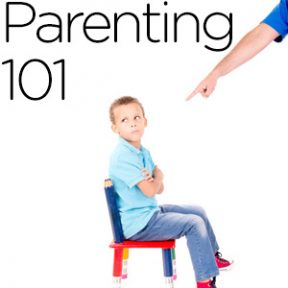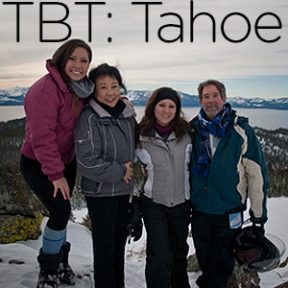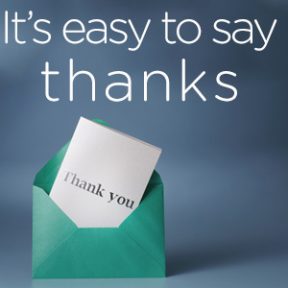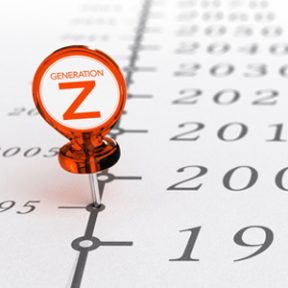 I still can’t fathom why college application deadlines are during the fall and early winter of the senior year. The UC and CSU (California state universities) deadlines are on Nov 30th – that’s only 3 months into 12th grade and just days after Thanksgiving. I don’t believe seniors are really ready to select each of the colleges to which they will apply this early in their last year of high school. Every year I see students cramming and stressed out to meet that deadline. Most haven’t yet visited the colleges and end up making decisions based on what their friends are doing or parents recommend – not what’s best for them.
I still can’t fathom why college application deadlines are during the fall and early winter of the senior year. The UC and CSU (California state universities) deadlines are on Nov 30th – that’s only 3 months into 12th grade and just days after Thanksgiving. I don’t believe seniors are really ready to select each of the colleges to which they will apply this early in their last year of high school. Every year I see students cramming and stressed out to meet that deadline. Most haven’t yet visited the colleges and end up making decisions based on what their friends are doing or parents recommend – not what’s best for them.
Then, most private college application deadlines are on January 1st. What cruel person(s) came up with New Years’ Day? Knowing that the majority of students wait until the last minute, that means that New Years Eve plans for the students – and their parents, mentors, and friends – are ruined. What’s worse, colleges aren’t open on January 1st because it is a legal holiday! So students can’t get answers to their last-minute questions, and stress levels are off the charts!
I believe that students really aren’t mature enough and ready to make college admissions decisions until the end of their senior year. Why don’t colleges accept students after their graduation so they can include the students’ senior grades in their overall GPA? Most students, especially boys, don’t realize the seriousness of their GPA and course selections until their junior year when it’s really too late to make a difference in the college application process. And, most importantly, students could apply to college when they are completely free of high school pressures and make smart choices about where they will spend the next 4 years of their lives.
 I still can’t fathom why college application deadlines are during the fall and early winter of the senior year. The UC and CSU (California state universities) deadlines are on Nov 30th – that’s only 3 months into 12th grade and just days after Thanksgiving. I don’t believe seniors are really ready to select each of the colleges to which they will apply this early in their last year of high school. Every year I see students cramming and stressed out to meet that deadline. Most haven’t yet visited the colleges and end up making decisions based on what their friends are doing or parents recommend – not what’s best for them.
I still can’t fathom why college application deadlines are during the fall and early winter of the senior year. The UC and CSU (California state universities) deadlines are on Nov 30th – that’s only 3 months into 12th grade and just days after Thanksgiving. I don’t believe seniors are really ready to select each of the colleges to which they will apply this early in their last year of high school. Every year I see students cramming and stressed out to meet that deadline. Most haven’t yet visited the colleges and end up making decisions based on what their friends are doing or parents recommend – not what’s best for them.
Then, most private college application deadlines are on January 1st. What cruel person(s) came up with New Years’ Day? Knowing that the majority of students wait until the last minute, that means that New Years Eve plans for the students – and their parents, mentors, and friends – are ruined. What’s worse, colleges aren’t open on January 1st because it is a legal holiday! So students can’t get answers to their last-minute questions, and stress levels are off the charts!
I believe that students really aren’t mature enough and ready to make college admissions decisions until the end of their senior year. Why don’t colleges accept students after their graduation so they can include the students’ senior grades in their overall GPA? Most students, especially boys, don’t realize the seriousness of their GPA and course selections until their junior year when it’s really too late to make a difference in the college application process. And, most importantly, students could apply to college when they are completely free of high school pressures and make smart choices about where they will spend the next 4 years of their lives.
 When my daughters studied medieval civilization, we traveled to Germany to explore medieval castles like Neuschwanstein (Fairytale castle) and took a night watchman’s tour of Rothenburg. We loved imagining what it must have been like to live in an era without electricity and cars. But now we can travel to a much closer destination here in the United States.
When my daughters studied medieval civilization, we traveled to Germany to explore medieval castles like Neuschwanstein (Fairytale castle) and took a night watchman’s tour of Rothenburg. We loved imagining what it must have been like to live in an era without electricity and cars. But now we can travel to a much closer destination here in the United States.
Just east of St. Louis, archaeologists have discovered a huge (bigger than Paris!) pre-Columbian city that had over 30,000 people at their peak in 1050. This medieval city was called Cahokia and was a booming megalopolis of the Mississippian culture.
By 1400, the population completely disappeared, leaving behind buildings, trash pits, and graves. Archaeologists from Indiana University, University of Toledo, and Eastern Connecticut State University have started uncovering this buried city east of St. Louis.
To read more about their discoveries and about the Cahokians, read this article!
 What do you do when it RAINS on your ski trip?
What do you do when it RAINS on your ski trip?
Make rain gear out of kitchen supplies!
How would MacGyver stay dry while skiing in the rain?
It was pouring RAIN when we arrived in Tahoe for Nicole’s annual birthday ski trip. Really? For 5 days prior to our arrival it dumped over 5 feet of fresh powder. We were so excited to hit the slopes and ski the powder. Our ski gear and powder pants are water RESISTANT, which is not the same as waterproof. We could ski in any conditions (subzero temps in Spain, blizzards at Northstar), but NOT RAIN. So what do you do when you’re in your condo and the roads are closed due to FLOODING? Ask MacGyver… Plastic and duct tape!
First I grabbed some oversized kitchen dishwashing gloves and placed elastic on the wrists to keep the rain out. I placed duct tape over the seams to seal the elastic in place. Then I placed my ski gloves inside the large dishwashing gloves so they would keep my hands dry and warm. When Nicole woke up, she liked my design so I made her a pair too. I thought she would think they were too embarrassing to wear, but she was intent on staying dry, too.
Then I took Nicole’s pair of plastic pants to use as a pattern to make plastic pants for me. I wasn’t about to wear my ski pants and get soaked. I grabbed 2 trash bags and duct taped them together. I cut out the pant legs with a scissor and then duct taped them together. I even put elastic to create a waistband! They certainly weren’t a fashion statement, but I stayed dry all day!
While indulging on overpriced burgers and fries at the lodge, Nicole commented on how everyone was soaking wet and wringing out their gloves and parkas. Then some young guys gave Nicole a thumbs up and said, “Those are great pants! We thought our stuff was waterproof, but they’re not!”. Everyone loved our solution to skiing in the rain!

 I was somewhat surprised when I was once told: “Please don’t use the ‘NO’ word with my child.” While I appreciate the philosophy that you can empower your child and build a positive framework about the world by referencing everything with a positive spin, it isn’t the real world, and I worry that those children will grow up to be unpleasantly introduced to a world that they don’t know or understand.
I was somewhat surprised when I was once told: “Please don’t use the ‘NO’ word with my child.” While I appreciate the philosophy that you can empower your child and build a positive framework about the world by referencing everything with a positive spin, it isn’t the real world, and I worry that those children will grow up to be unpleasantly introduced to a world that they don’t know or understand.
Always saying “YES” to a child is actually really difficult to do. It requires reframing virtually everything you say. What if your child wants to eat pizza for every meal? Or worse, Gummy Bears? This parent might respond with a question: “Could you please first take a bite of the chicken – or spinach – and then you can have the Gummy Bears.” While this might sound okay on first blush, there are 2 intrinsic problems you’re creating.
First, you’re giving your child mixed messages about nutrition. Using junk food as a bribe to eat healthy food can cause food issues down the road. Feeding children fast foods or sweets is the cause of our obesity problem in America. It has become the go-to meal when we want to please the kids and avoid dinner-table conflicts.
Second, you’ve undermined your position as the “grown-up.” Yup, as the parent, you need to look out for what’s best for your child. Most experts suggest that children aren’t equipped with the reasoning skills to thoroughly understand right from wrong until they’re 25 years old. So why would a parent put their child in the driver’s seat by always saying “yes” and asking permission to make a recommendation?
Besides, I can’t put together sentences that don’t have the negative words like “no” or “can’t”, and I certainly don’t want to ask a 3 year old for permission to leave a party. I wonder what happens when this toddler becomes a teenager. Not sure that this type of parenting will work when teens know who wears the pants in their families. What would the parent say when their teen wants to have sex, drink beer, or smoke e-cigs? Parenting isn’t easy but for the sake of the children, parents need to be the grown-ups so their children can trust them to be the caring and wise leader in their lives that they need.

Last year, we skied and snowmobiled up in Lake Tahoe for Nicole’s birthday, and we’re heading up to Tahoe for her birthday again!
Looking forward to a weekend getaway!

 Before emails and texting – yes, there was once upon a time when we used to have to write letters with a pen and paper. That entailed buying stationery from a stationery store and it would cost about $8 a box of 8 cards and envelopes (back in the 70’s). Then we would have to buy stamps on sheets of 10 or rolls of 100 at the post office. And if we made a mistake on the letter or envelope, we’d have to start over! Yet even though writing a thank you note took 10 times longer and actually cost money to do so, we wrote thank you cards and letters every time we received a gift.
Before emails and texting – yes, there was once upon a time when we used to have to write letters with a pen and paper. That entailed buying stationery from a stationery store and it would cost about $8 a box of 8 cards and envelopes (back in the 70’s). Then we would have to buy stamps on sheets of 10 or rolls of 100 at the post office. And if we made a mistake on the letter or envelope, we’d have to start over! Yet even though writing a thank you note took 10 times longer and actually cost money to do so, we wrote thank you cards and letters every time we received a gift.
But today, kids (and even adults) often don’t write or even acknowledge gifts they receive. I’m not talking about writing a formal thank you letter on expensive stationery – I’m talking about simply sending a text or email just to let the gift giver know that the gift was received. Call me old fashioned, but it seems rude that children today are not being taught consideration and well, etiquette.
When my girls were young, they would receive dozens of gifts from family and friends. I was the first to have children so my kids were indulged by everyone. Just last week while Nicole and Jaclyn were home for Christmas, they mused about how nice this Christmas was because they didn’t have to write all of those thank you letters. Back then, they would open a gift, and play with it so they could write a meaningful letter about what they liked best about the game or toy. If they received clothes, they modeled the outfit before the camera and we sent a photo showing them wearing the clothes. When they finished their thank you note, they opened the next gift. You’re probably thinking that this is over the top, but it slowed down the gift opening so the girls got to appreciate each gift. When they were really young, it generally took several days to open all of the gifts for Christmas.
I don’t think I can say that Nicole and Jaclyn liked this system, but I’m sure the gift givers enjoyed receiving their thank you letters. Even with everyone’s busy schedules today, I think kids do, or should, have time to send a text or email, or make a call to show their appreciation.
 It’s 2017 and the world is in waiting as we prepare for a new administration to enter the White House for the next 4 years. While my political position is obvious, I am excited to see a resurgence of activism across the nation and I hope that this activism will be the key in working with peoples from across the globe to save civilization as we know it. The youth is suddenly cognizant of climate change and our precarious position as the biggest energy user and super power.
It’s 2017 and the world is in waiting as we prepare for a new administration to enter the White House for the next 4 years. While my political position is obvious, I am excited to see a resurgence of activism across the nation and I hope that this activism will be the key in working with peoples from across the globe to save civilization as we know it. The youth is suddenly cognizant of climate change and our precarious position as the biggest energy user and super power.
I haven’t seen youth this interested in decades, and I’m pleased to see them wake up. As Princess Leia said, “Help me Obi-Wan, you’re my only hope!” I’m looking to our youth to make the sacrifices needed and lead the way to a clean energy future.
 Generation Z is the new label placed on our youth today. They are the first generation of kids who have been completely connected to social media since birth. If you’re like me, you’re having trouble remembering how these generations are different. Here’s a quick guide to identify the youth since the Baby Boomers:
Generation Z is the new label placed on our youth today. They are the first generation of kids who have been completely connected to social media since birth. If you’re like me, you’re having trouble remembering how these generations are different. Here’s a quick guide to identify the youth since the Baby Boomers:
Generation X:
Born between 1966-1976 (41 million)
Referred to as the “lost” generation who were often “latchkey” kids.
Generation Y:
Born between 1977-1994 (71 million)
Referred to as sophisticated and tech wise, and indulged by Cable TV, satellite radio and the internet.
Generation Z:
Born between 1995-2012 (23 million)
Referred to gender fluid, hyper-stressed, connected but lonely.
According to The Guardian, Generation Z kids are online 3 hours per day and their most popular apps include Snapchat, Instagram and messaging app Kik. This Gen Z group has more mental health issues that center around low self-esteem, anxiety, depression and self-harm than previous generations.
They are generally unhappy with themselves probably because they have access to news and social media 24/7. They see how many parties they weren’t invited to and how everyone seems to be having fun without them. Although they might have “1000” friends, they really don’t know most of them.
These kids don’t get to “play” or take breaks from academic and social pressures. Whether or not parents or teachers state this to them directly, the kids know that competition is fierce and they have to fight to succeed.
The good news is that Gen Z kids are smoking fewer cigarettes and drinking less alcohol than previous generations.
I think that with information overload, Generation Z kids are overwhelmed with what’s available to them and what everyone else is doing. I believe that if these kids have the opportunity to do one project – something that they are fascinated by – they will benefit from focusing their energies and developing their projects. This in itself will build self-worth and confidence, which would also make them happier.
[Source]
 Here’s a Fact Checker’s Guide for detecting “fake news”:
Here’s a Fact Checker’s Guide for detecting “fake news”:
Back in the day, media sources were limited largely to TV newscasters and journalists for newspapers and magazines. Journalists like Walter Cronkite delivered the news and we believed every word. Although “fake news” was not a thing back then, we knew whether the news leaned slightly left or right.
Today, social media and the internet make it possible for anyone to conjure up propaganda under the guise of legitimate news. While this is super bad, what’s worse are the people who “share” these articles on Facebook, Twitter, and other social sites. By endorsing fake news, this misinformation can spread like wildfire. People often share these stories after reading only the headlines, without even bothering to read the articles.
So here are a few tips to check if you’re reading Fake News.
- Check the article’s website
Real: ABC News = abcnews.go.com
Fake: ABC News = abcnews.com.co
** “.co” is an internet country code domain for Colombia - Check the “Contact Us” page
Fake news usually doesn’t have a Contact Us page - Check the byline of the reporter
Fake news journalists usually boast ridiculous claims - Check for fake quotes
Fake news makes claims from Snopes.com about legitimacy of the article - Check the sources
Fake news will not have links to sources - Check the ads
Fake news will have inappropriate ads - Check search engines & sites dedicated to identifying fake news:
Field Guide to Fake News Sites (Snopes.com)
RealorSatire.com
The best way to stop fake news is to think before you share!
[Source]
 If your New Year’s Resolution includes finding a new job, here are some tips that the Washington Post suggests:
If your New Year’s Resolution includes finding a new job, here are some tips that the Washington Post suggests:
#1: Do your homework
Research the company (annual reports, website) so you are in the know. Also check out the interviewer (LinkedIn or online search) so you have some handy background information.
#2: Ask about the interview format
Be prepared for the SAR (situation, action, result) or the Case interview formats. For the SAR, have several compelling stories that give you the opportunity to show them what you’ve accomplished in previous positions. For the Case, you’ll be given a scenario and you’ll walk them through the process of solving the problem. Either way, you’ll be evaluated on your approach. Show them that shows that you are thorough, comprehensive, and logical.
#3: Let your passion shine through
Share your passion for the job opportunity and communicate your thoughts by telling the interviewer how this position aligns with your values, experience, and passion. Lean forward to show that you are interested and listen carefully to learn what you can about the job and the company needs.
#4: Close the deal
Even if they don’t ask, summarize all of the points that you discussed during the interview and why this is a good fit for you. Ask about the next steps and follow up with a “thank-you” email.
By being prepared for the interview, you’ll increase your odds of landing that great job!










